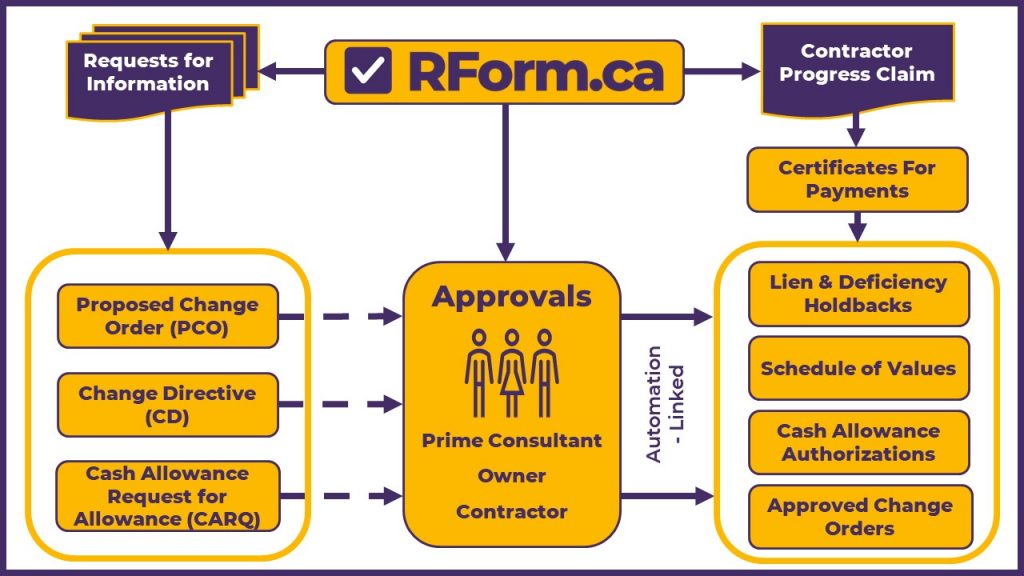
Change is an inescapable reality in architectural construction projects. From client requests for design modifications to unexpected site conditions or shifting market prices, factors outside the original plan are bound to arise. Effectively managing these changes is critical to ensure projects stay on track, avoid budget overruns, and minimize costly delays. This is where Change Orders (COs) and Change Directives (CDs) are vital.
What is a Change Order? A Change Order is a formal document initiated by the consultant to address deviations from the original project plans. This might involve additional work, the removal of work, or a substitution of materials.
What is a Change Directive? A Change Directive is issued by the owner (often through the consultant) when a change is time-sensitive and cannot wait for traditional CO processes. It authorizes the contractor to proceed with the change without a pre-agreed price.
COs vs. CDs: When to Use Which: Change Orders are the preferred method when there’s time for standard consultation and agreement across all stakeholders. Change Directives are reserved for urgent circumstances where delays would be more costly than proceeding without a fully established price.
The Importance of Efficient Change Management: Uncontrolled changes can quickly derail a project’s budget and timeline. That’s why efficient change management is paramount:
- Cost control: Well-tracked changes protect against surprise cost increases, allowing for better project financial management.
- Time management: Swift resolution of change requests avoids delays and keeps the project on track.
- Reduced disputes: Transparent documentation can mitigate potential disagreements and protect all stakeholders.
How RForm Helps: RForm, a specialized contract administration software, excels at streamlining the management of project changes:
- Centralized Platform: RForm provides a single repository for all COs, CDs, supporting documents, and communication, ensuring everyone stays on the same page.
- Automated Workflows: Customizable workflows within RForm guide the process, from drafting COs and CDs to obtaining approvals, reducing manual errors and delays.
- Transparency and Audit Trails: RForm’s detailed logging features keep a clear record of change proposals, communications, and decisions, promoting accountability and easing potential disputes.
Preventing Surprises:
- Digital Document Repository: RForm stores all project drawings, specifications, and reports in a central location. When an unexpected site condition arises, everyone can immediately access the relevant documents for swift decision-making.
- RFI Integration: If clarification is needed before a change can be proposed, RForm’s RFI (Request for Information) feature allows rapid communication to get answers from the design team.
- Version Control: RForm automatically tracks revisions to plans and documents, ensuring clear visibility into the adjustments made due to site conditions.
- Budget Tracking: RForm connects approved change orders directly to the project budget and payment certificates. This allows real-time tracking of cost impacts due to material price changes or labour adjustments.
Overall Benefits of RForm in Change Management
- Reduced administrative burden: RForm eliminates manual shuffling of paperwork and chasing approvals, freeing time to focus on solutions.
- Minimized errors: Automated workflows and standardized forms catch potential mistakes early.
- Increased collaboration: The shared platform streamlines stakeholder communication, driving faster resolution of changes.
- Dispute mitigation: Comprehensive records protect all parties if a change leads to disagreements over scope or cost.
Please note: While RForm is a powerful tool, successful change management relies on strong contract language and good working relationships among all project stakeholders.
Change might be inevitable in construction, but its disruptive potential can be managed. Know the difference between Change Orders and Change Directives, have strong contractual provisions, and employ a robust tracking system like RForm. Doing so gives you the upper hand in navigating change and keeping your projects on track and within budget.

